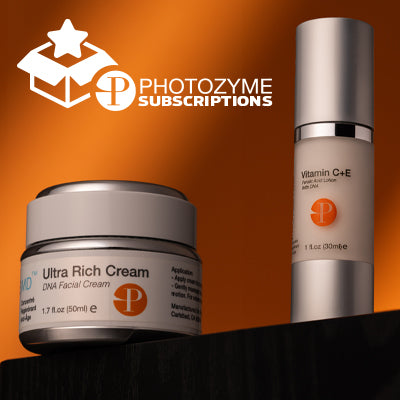
Photodamage, otherwise known as DNA damage, is everywhere. DNA is at the heart of skin cells, in the nucleus and in the mitochondria. The are multiple causes of dna damage: Sun (UV Light), air pollution (ozone) and metobolism (2-20% of oxygen is converted to free radicals). With age, the efficiency of metabolism and dna repair declines. Removal of damaged proteins also declines and oxidative damage accumulates.

DNA damage presents as:
- Dyschromia, an alteration of the color of skin
- Loss of skin elasticity
- Fine lines and wrinkles
- Increased UV spots
- Increased cancer risk

After a sunburn there are 100,000 damages to DNA in each cell and it takes one day to remove half of the direct damage. There are solutions. Photosomes-V is one of the solutions, a way to repair damage in DNA with photolyase. The scientific name of Photolyase is anacystis nidulans.

Photosomes-V is a liposome containing the enzyme Photolyase. This enzyme is found in plankton and is expressed as blue-green algae. These liposomes are made of 3 different phospholipids. One of the phospholipids is pH sensitive. This smart targeting technology allows for a delivery of the liposomes in the epidermis and a release of the enzymes with the acidity of the lysosomal sacs. These enzymes are DNA binding proteins with a natural affinity for damaged DNA. Photolyase is a light-activated, both natural and ambient, repair system of sun damage on DNA.

Photosomes provide direct reversal of DNA damage through photoreactivation. The liposomes delivery photolyase into the skin where they recognize damaged dna. The enzyme photolyase uses visible light (violet/blue) as a source of energy to repair UV-induced DNA damage. Sunscreen is not enough to protect the skin from DNA damage.


In conclusion, Photolyase (anacystis nidulans) is a light activated dna repair enzyme derived from plankton and expressed as blue-green algae. It is encapsulated in vegetable liposomes. Once it is applied to the skin, it helps the body remove damaged dna caused by exposure to ultraviolet light which in turns slows the aging process.


